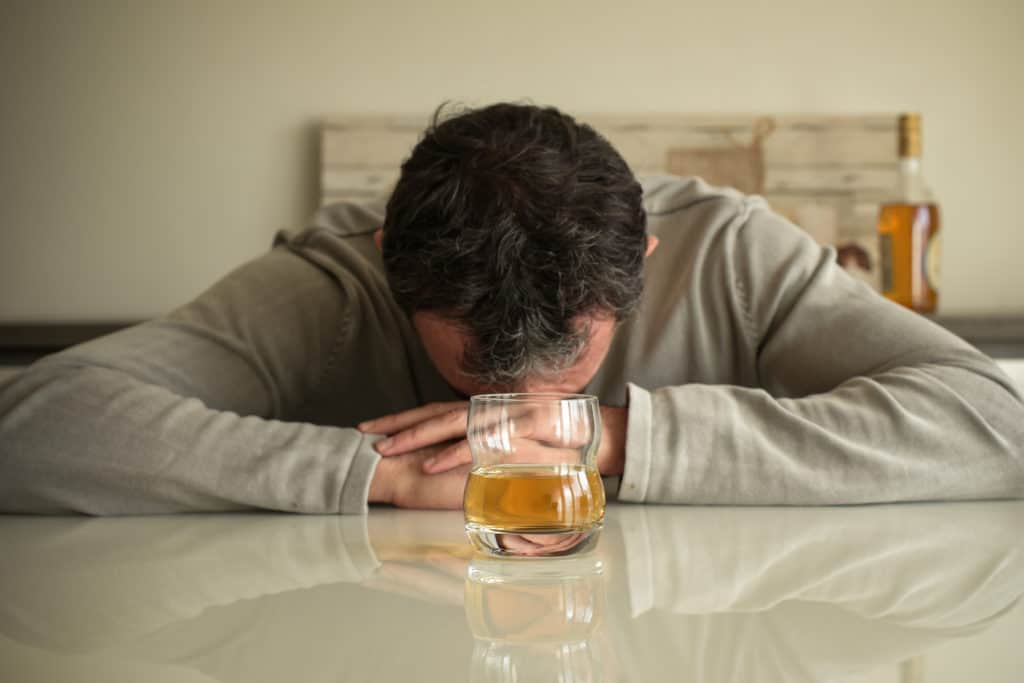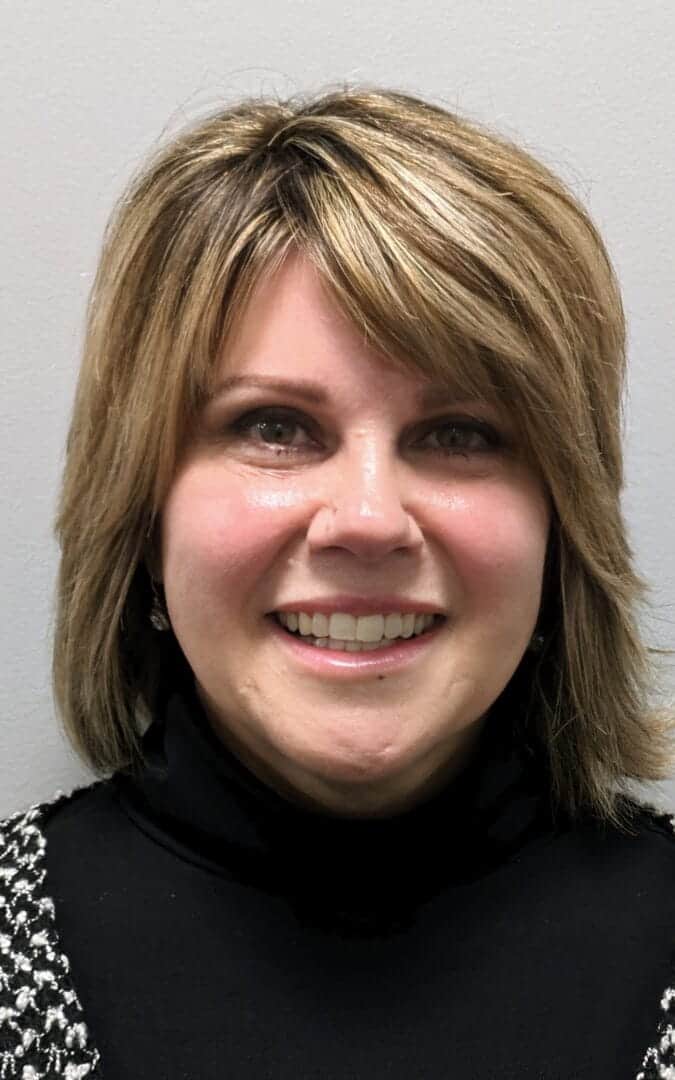
Table of Contents
Major depression, one of the most common mental illnesses, affected 4.1 million adolescents and 21 million adults in 2020.1(pg.31, right column) Of those with mental health disorders, 17 million adults also suffered from substance use disorder (SUD).1(pg.34) And as a result of inadequately treated depression, 1.2 million American adults attempted suicide in 2020.1(pg.35, suicide attempts)
Untreated depressive disorders put millions of people at risk for suicide and other dangers every year, including substance misuse.1(pg.33, substance use among adolescents with MDE) This page will explore the facets of depressive disorders, their relationship to substance misuse and addiction, and potential treatment.
What Is Depression?
Depression, often referred to as major depressive disorder (MDE), is a serious mental illness that causes negative mood changes, thought, and behavior.2(overview) MDE is the prototypical form of a depressive disorder, but there are other types of depression.3(pg.155)
Feelings of loneliness, sadness, or low motivation can occur within a healthy spectrum of human emotions. But, people with depressive disorders experience them longer or more severely than would be expected.2(signs and symptoms) In addition, depressive disorders often affect a person physically and cognitively.3(pg.160-161 diagnostic criteria) To continue functioning despite depression, people may partake in unhealthy coping skills (such as substance use) before seeking treatment.
Types of Depressive Disorders
Each variation of depressive disorder follows a specific pattern of symptoms.3(pg.155) Depressive disorders found in the Diagnostic and Statistical Manual of Mental Health (5th edition) (DSM-5) include:
- Major depressive disorder is characterized by recurring major depressive episodes that last two weeks or more. They are characterized by several depressive symptoms for the entirety of the episode. The episodes may occur at any time, with or without a known trigger, but without a clear alternative cause.3(pg.160-161 diagnostic criteria)
- Persistent depressive disorder (dysthymia) is diagnosed when a person experiences constant symptoms of depression for at least two years.3(pg.168)
- Premenstrual dysphoric disorder is identified when a person experiences several depressive symptoms in the days before her menstrual cycle. But the symptoms diminish after it begins.3(pg.171=172 diagnostic criteria)
- Substance/Medication-Induced Depressive Disorder is depression caused by substance use or medications. Or, as a result of withdrawal from a substance.3(pg.175 diagnostic criteria)
- Depressive Disorder due to another medical condition is common with many medical conditions. Physiological mechanisms of the other condition, may affect the brain and contribute to depression3(pg.181, diagnostic features.)
Each type of depressive disorder can manifest on a spectrum of varying severity.3(pg.162, severity/course specifier) A mental health professional is needed to determine the severity of each disease and course of treatment for a person’s best chance of recovery.
Signs and Symptoms of Depressive Disorders
Depression can appear in many forms.3(pg.163) Some people may predominantly experience it, while others may be most affected by the loss of pleasure.3(pg.163) While there is a wide spectrum of symptoms, people with depressive disorders may experience any of the following:3(pg.161)
- Feelings of sadness, emptiness, or hopelessness that last many days for most of the day
- Loss of pleasure or interest
- Significant intended weight changes (gain or loss)
- Needing much more sleep or insomnia
- Constant bodily movement or experiencing much slower and fewer movements
- Lower energy
- Feeling worthless or having inappropriate guilt
- Diminished cognition or thinking ability
- Thinking of death, imagining suicide, and planning or attempting suicide
- Anxiety or excessive worry3(164-165 associated features…)
- Psychosis3(164-165 associated features…)
- Irritability3(164-165 associated features…)
Depending on the person and particular disorder, other symptoms may be experienced. Always tell your doctor or other clinicians about all the symptoms you experience to get the correct diagnosis and the best treatment plan.
Causes for Depressive Disorders
As one of the most common mental disorders in the United States, depressive disorders have been extensively researched.2(risk factors) Examples of factors that contribute to the development of depression include:4(what causes depression)
- Genetic factors: Certain genes passed on through family lines can contribute to the development of depression. A family history of depression puts you at greater risk.
- Biological factors: Having certain medical conditions, or taking certain medications, can contribute to depression through physiological factors or increase the risk from the stress of the condition.
- Environmental factors: Major life changes, traumatic or stressful events, or substance misuse may contribute as well.
Though there are certain risk factors, depression can sometimes develop unexpectedly. About 16 million Americans are affected by depression every year, and more than 15% of adults experience it at some point in their life.4(who gets depression)
Substance Use Disorders and Depression
Substance use disorders and mental illnesses, such as depression, often occur together.5(part 1: the connection between substance use disorders and mental illness) Three main mechanisms can contribute to the development of co-occurring disorders (dual diagnosis) with substance use disorder.5(why is there comorbidity between substance use disorders and mental illness)
- Similar risk factors contribute to both depression and addiction. Genes, factors that modify genes at certain stages of development, stressful or traumatic life events, and effects on similar brain regions can all increase a person’s risk of either disorder.5(common risk factors can contribute to both mental illness and substance.)
- Depression may contribute to substance use (and addiction). After the development of depression, there may be changes in the brain that make a person more vulnerable to developing substance use disorder. Or some people may engage in substance misuse as a way of coping with their depression, which can lead to addiction.5(mental illness can contribute to drug use)
- Substance use and its consequences can increase the likelihood of developing depression. Physiological brain changes occur when a person uses drugs or alcohol chronically. These changes can predispose a person to developing depression or other mental illnesses.5(substance use and addiction can contribute to the development of mental illness)
People who have co-occurring disorders often have more severe and persistent conditions than those with only one diagnosis.5(what are some approaches to diagnosis) To give a person the best chance of recovery, they must engage with an integrated treatment plan that treats both their conditions at once.5(what are the treatments for comorbid substance use disorder and mental health) Due to the risk of more severe outcomes, most treatment centers provide thorough assessments at enrollment to ensure no diagnosis is missed.5(what are the treatments for comorbid substance use disorder and mental health)
Co-Occurring Disorders Treatment
Treatment plans for alcohol or opiate addiction and depression use many tools for recovery. Whether in an inpatient or outpatient alcohol rehab or drug rehab program, treatment is likely to involve medication and behavioral therapy to address aspects of both disorders. 5(what are the treatments for comorbid substance use disorder and mental health) The types of medications and therapies involved depend heavily on the type of substance misused and the severity of depression.5(what are the treatments for comorbid substance use disorder and mental health)
If you or a loved one are struggling with depression alongside addiction, there is hope for recovery. Addiction treatment centers such as Virtue Recovery Center offer individualized treatment plans according to your needs, including alcohol detox and opiate detox. Call Virtue Recovery Center or contact them online to get answers to your questions and get started on your path to recovery.
FAQ
-
What is the relationship between substance abuse and depression?
Substance abuse and depression often co-occur, with each condition potentially exacerbating the other. This dual diagnosis is common, as individuals may use substances to self-medicate depression symptoms, while substance abuse can worsen or trigger depressive episode.
-
How does substance abuse affect depression symptoms?
Substance abuse can intensify depression symptoms, interfere with treatment effectiveness, and increase the risk of suicidal thoughts or behaviors. It can also lead to changes in brain chemistry that may worsen depressive symptoms.
-
What are some common signs of co-occurring substance abuse and depression?
Signs may include persistent sadness, loss of interest in activities, changes in sleep patterns, difficulty concentrating, and increased substance use to cope with negative emotions.
-
Can treating substance abuse help alleviate depression symptoms?
Yes, addressing substance abuse can often lead to improvements in depression symptoms. Treatment for both conditions simultaneously is typically recommended for the best outcomes.
-
What treatment options are available for individuals with co-occurring substance abuse and depression?
Treatment options may include integrated dual diagnosis programs, cognitive-behavioral therapy, medication management, support groups, and holistic approaches that address both mental health and substance use disorders.
Resources:
- Substance Abuse and Mental Health Services Administration. (2021). Key substance use and mental health indicators in the United States: Results from the 2020 National Survey on Drug Use and Health (HHS Publication No. PEP21-07-01-003, NSDUH Series H-56). Rockville, MD: Center for Behavioral Health Statistics and Quality, Substance Abuse and Mental Health Services Administration.
- NIMH. (2022, September). Depression.
- American Psychiatric Association. (2013). Diagnostic and statistical manual of mental disorders (5th edition).
- CDC. (2022, September 14). Mental health conditions: depression and anxiety.
- NIDA. (2020, April). Common comorbidities with substance use disorder research report.
Are You Covered For Treatment?
At Virtue Recovery Center, we understand the importance of accessible care. That’s why we’re in-network with numerous private insurance companies, ensuring that your journey to recovery is supported from the start. Let us help you quickly and easily verify your insurance coverage. Begin your path to healing today.
- About the Author
- Latest Posts
Gigi Price( Clinical Director )
Gigi Price holds licenses as a Master Social Worker and Clinical Drug Counselor. She completed her master’s degree in Social Work at Texas State University. Over the last decade, Gigi has been dedicated to utilizing evidence-based practices to enhance patient care and treatment planning, resulting in positive, long-term outcomes for patients and their families. Her passion lies in creating a treatment environment where professionals collaborate to bring about positive change and provide a safe, trustworthy therapeutic experience. Patients can be confident in receiving top-quality care under her leadership.
In her role as the Clinical Director of Virtue Recovery Houston, Gigi conducted research to identify the most effective approaches for treating patients with acute mental health diagnoses, PTSD, and Substance Use Disorder. She then assembled a team of skilled clinicians who could offer various therapeutic modalities, such as Cognitive Behavioral Therapy (CBT), Dialectical Behavioral Therapy (DBT), Acceptance and Commitment Therapy (ACT), Somatic Exposure, Eye Movement Desensitization and Reprocessing (EMDR), and Cognitive Processing Therapy (CPT). Gigi takes pride in overseeing the development and implementation of Virtue Houston’s Treatment Program, which includes two specialized therapeutic curricula tailored to the unique needs of individuals struggling with mental health issues, addiction, and PTSD.
Key Takeaways Narrative therapy helps people reframe their life stories …
Key Takeaways Some drugs are harder to quit because of …
Key Takeaways Nalbuphine is a synthetic opioid used for treating …
Key Takeaways Fentanyl is a powerful synthetic opioid, up to …
Key Takeaways Meth contamination happens when a home has been …
Key Takeaways Meth mites, meth bugs, and meth sores are …


























